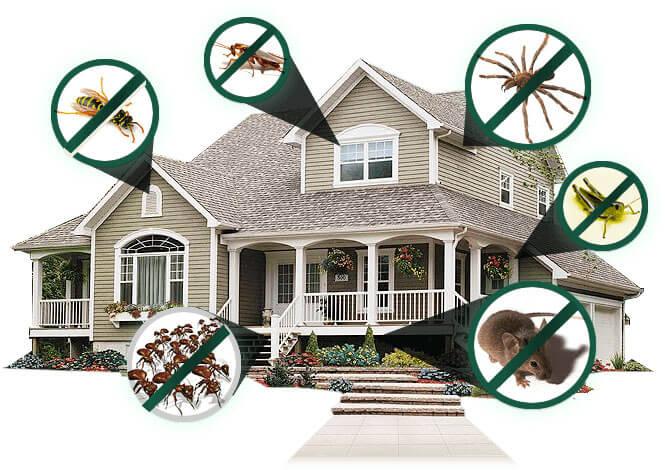Bed Pest Therapy Breakdown: Comparing Chemical Vs. Non-Chemical Solutions
In the realm of pest control, especially when managing the relentless issue of bed bugs, the selection between chemical and non-chemical therapy services can be a pivotal one. Both approaches supply distinct benefits and disadvantages, influencing variables such as efficiency, safety and security considerations, and general expense. By checking out the nuanced details of each approach, a more clear understanding of which course to go after in resolving a bed pest problem can be acquired.
Effectiveness of Chemical Therapies
Chemical therapies for bed bug invasions have been widely identified for their potent and fast efficacy in getting rid of these pests. When considering the effectiveness of chemical treatments, it is vital to recognize that they can supply a quick and detailed service to a bed insect trouble.
In addition, chemical therapies have the benefit of providing residual impacts, implying that they can continue to remove bed pests even after the preliminary application. This residual activity is particularly beneficial in combating any type of possible re-infestations. In addition, the rapid action of chemical treatments can bring relief to people facing extreme bed bug problems, allowing them to reclaim control of their living areas quickly.
Security Interest In Chemical Solutions
One crucial element that needs cautious consideration when making use of chemical options for bed bug therapy is making sure the safety of passengers and the setting. While chemical treatments can be reliable in removing bed pests, they might pose dangers otherwise dealt with correctly. Among the main safety worry about chemical services is the potential harm they can cause to human wellness. Exposure to particular chemicals made use of in bed bug therapies can lead to respiratory problems, skin irritability, or various other damaging reactions, particularly in people with pre-existing conditions or level of sensitivities. Additionally, improper application or dose of chemical pesticides can lead to poisonous deposits remaining in the treated area, posturing lasting wellness risks to passengers.
Additionally, the ecological effect of chemical solutions is an additional considerable consideration. Some pesticides utilized in bed bug treatments might be hazardous to valuable insects, wild animals, and ecological communities if they seep right into the soil or water systems. It is vital to make use of chemical therapies carefully, adhering to security guidelines, and taking into consideration less hazardous alternatives to minimize these dangers and guarantee the risk-free and reliable management of bed pest invasions.
Advantages of Non-Chemical Methods
Thinking about the possible safety problems and environmental effect connected with chemical remedies for bed insect therapy, exploring non-chemical approaches presents an appealing choice with a number of unique benefits. Non-chemical therapies are eco friendly, as they do not contribute to air or water contamination, making them a sustainable choice for pest control.
Additionally, non-chemical solutions can be efficient in targeting bed bugs, including hard-to-reach locations where chemical therapies might not penetrate - A1 bed bug go right here exterminator charlotte. Techniques such as heat treatment, vacuuming, vapor cleansing, and cushion encasements offer thorough removal without the use of unsafe chemicals.
Limitations of Non-Chemical Treatments

Additionally, non-chemical treatments commonly require multiple applications to achieve successful obliteration. This can be lengthy and may not constantly guarantee total removal of all bed pests and their eggs, particularly in concealed or hard-to-reach locations.
Furthermore, the success of non-chemical therapies greatly depends on appropriate application and thoroughness, which can be testing for people without specialist knowledge. Insufficient application of non-chemical methods may cause incomplete eradication, resulting in consistent infestations and the demand for additional therapies.
Consequently, while non-chemical treatments have their benefits, it is vital to acknowledge these constraints and consider them when establishing the most effective strategy for taking care of bed insect problems.
Cost Contrast: Chemical Vs. Non-Chemical Options
Provided the restrictions connected with non-chemical treatments, a necessary element to examine in the context of bed pest monitoring is the use this link price contrast between chemical and non-chemical alternatives. Chemical treatments usually entail the application of insecticides by experts, which can vary from $250 to $900 per room, depending on the seriousness of the infestation and the size of the location to be dealt with. On the other hand, non-chemical therapies like warmth therapy or steam can be extra costly, with costs varying from $1,000 to $6,000 for an entire home. While the initial price of chemical therapies might seem reduced, several treatments may be called for to fully get rid of the infestation, possibly boosting the general price. On the various other hand, non-chemical alternatives may give a more eco-friendly and lasting remedy, although they can be cost-prohibitive for some individuals. Inevitably, when considering the expense of bed insect treatment options, it is essential to weigh the upfront costs against the performance and long-term sustainability of the selected approach.
Final Thought

Thinking about the possible safety worries and environmental impact linked with chemical options for bed pest treatment, checking out non-chemical techniques provides an encouraging choice with several distinctive benefits.Given the constraints associated with non-chemical treatments, a vital facet to examine in the context of bed bug administration is the expense comparison between chemical and non-chemical choices. In comparison, non-chemical therapies like warmth click for more treatment or vapor can be a lot more costly, with costs varying from $1,000 to $6,000 for a whole home. While the preliminary price of chemical therapies may appear lower, numerous therapies might be required to fully remove the infestation, potentially increasing the general expense.In verdict, when contrasting chemical and non-chemical bed insect therapy alternatives, it is important to think about performance, safety and security, benefits, restrictions, and price.